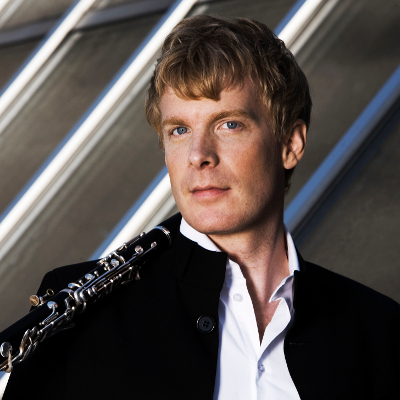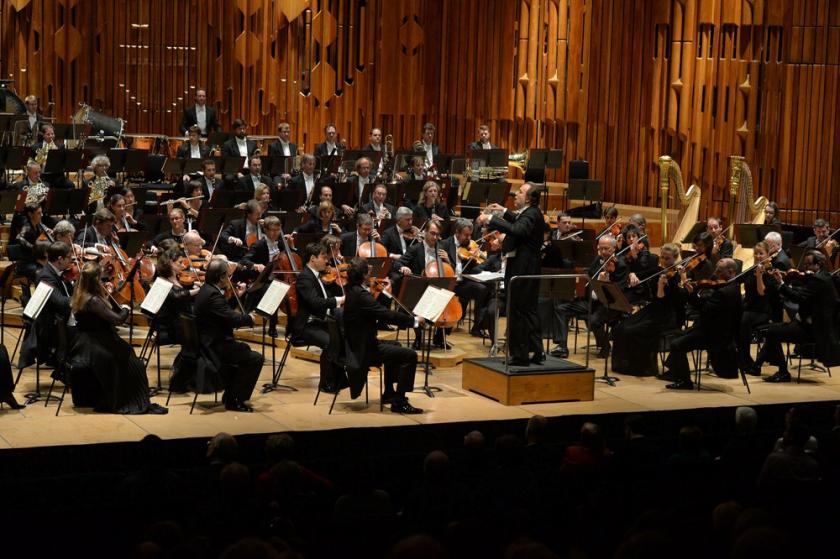Final thoughts: a fitting theme for the farewell concert of this year’s Gewandhaus Barbican residency. But the connections proved tenuous: Death and Transfiguration, the gloomy opener, was written when Strauss was only 25, and the Mozart Clarinet Concerto which followed, while it was one of his last works, shows little concern for mortality or summation. But the motivation was honourable – to find homes for Strauss’ tone poems, which rarely fit comfortably in any concert programme.
This will probably be the last time that Riccardo Chailly conducts the Gewandhaus Orchestra in the UK (he’s about to stand down as Gewandhauskapellmeister to focus on his duties at La Scala and with the Lucerne Festival Orchestra). Their decade-long collaboration has been as distinctive as it has been successful, and this concert provided a showcase for everything they have achieved together. Chailly is a controlling presence; he beats time continuously, and is in charge of every beat of every bar. Yet the orchestra retains a sense of spontaneity, a result perhaps of the subtle rubato in Chailly’s beat, or perhaps of the rapport between the players. Soloists are given little space to shape their solos, yet their sheer virtuosity allows character and passion to shine through.
A strong guiding hand can be a benefit in Struass, music that changes tempo and mood often, and that requires a huge orchestra to speak as one. In Death and Transfiguration Strauss regularly goes to extremes of dynamic and expression, and Chailly expertly guided the players from one pole to another. From the very start – quiet, sombre chords in the strings – it was clear what makes this orchestra special, the tone bronzed, the ensemble immaculate. As the music grew in volume and complexity, that clarity held firm, with all the mid-range themes and ideas, the viola interjections, the interplay between the woodwinds, shining through the texture. Less successful were the tuttis. Unlike resident orchestras, the Gewandhaus makes no concession to the Barbican’s acoustic (why should they?) and the powerful brass lost its character as the hall generalised their sound.
 After this, any performance of Mozart was bound to be a welcome relief. Martin Fröst (pictured left; photo: Mats Bäcker) performed the Clarinet Concerto on a basset clarinet, the slightly larger relative for which the work was originally composed. But this was a modern version, in straight formation without a brass bell or a crooked neck. The bore is relatively narrow, and the tone light. The greater length and lower pitch must make fast runs more difficult to handle, but Fröst delivered the solo part with aplomb. Balance was excellent between orchestra and soloist, with the Gewandhaus strings again demonstrating their astonishing ability to play with character, elegance and precision even at the lowest dynamics. Chailly’s tempos were fast, but Fröst never seemed uncomfortable. The light tone of his instrument emphasises attack over decay, allowing him to cleanly articulate the rhythms and drive the faster tempos. The Adagio was surprisingly fast as well, but the charm and character of Fröst’s playing, supported by Chailly’s subtle rubato and the silken string tone, made it as beautiful as ever, especially the whispered return of the main themes in the coda. Magical.
After this, any performance of Mozart was bound to be a welcome relief. Martin Fröst (pictured left; photo: Mats Bäcker) performed the Clarinet Concerto on a basset clarinet, the slightly larger relative for which the work was originally composed. But this was a modern version, in straight formation without a brass bell or a crooked neck. The bore is relatively narrow, and the tone light. The greater length and lower pitch must make fast runs more difficult to handle, but Fröst delivered the solo part with aplomb. Balance was excellent between orchestra and soloist, with the Gewandhaus strings again demonstrating their astonishing ability to play with character, elegance and precision even at the lowest dynamics. Chailly’s tempos were fast, but Fröst never seemed uncomfortable. The light tone of his instrument emphasises attack over decay, allowing him to cleanly articulate the rhythms and drive the faster tempos. The Adagio was surprisingly fast as well, but the charm and character of Fröst’s playing, supported by Chailly’s subtle rubato and the silken string tone, made it as beautiful as ever, especially the whispered return of the main themes in the coda. Magical.
Strauss’s Metamorphosen opened the second half. The strings took a minute to regain their impressive composure, and some tuning problems in the cellos soured the opening phrases. The performance that followed was the least successful of the evening. Chailly again opted for fast tempos, driving through every phrase, and allowing the music little sense of contemplation. There was rubato here, but only on a more structural level; the individual phrases were given little chance to breathe. Fortunately, Chailly relaxed towards the end, giving a sense of expanse and desolation to the coda that had been lacking up until then. Chailly was on typically distinctive form here, but too much was lost for too little gain.
Fortunately, the concert ended on a high, with a stunning Till Eulenspiegel. The crisp articulation of the first violins, as they played the opening motif, was matched by every other section as the idea was passed around the orchestra. The woodwind solos, especially the clarinet, were all excellent, and non felt constrained by Chailly’s overbearing baton. Even the raucous brass sound worked to this music’s favour, coming into focus for all the driving tuttis, fast and cleanly phrases, but properly weighty too. Chailly managed to inject this work with a feeling of spontaneity and life that had only occasionally been apparent earlier on, while the sense of structural unity and control – something he always seems to manage – remained as strong as ever. A triumphant finale then, but to a decidedly mixed evening.















Add comment